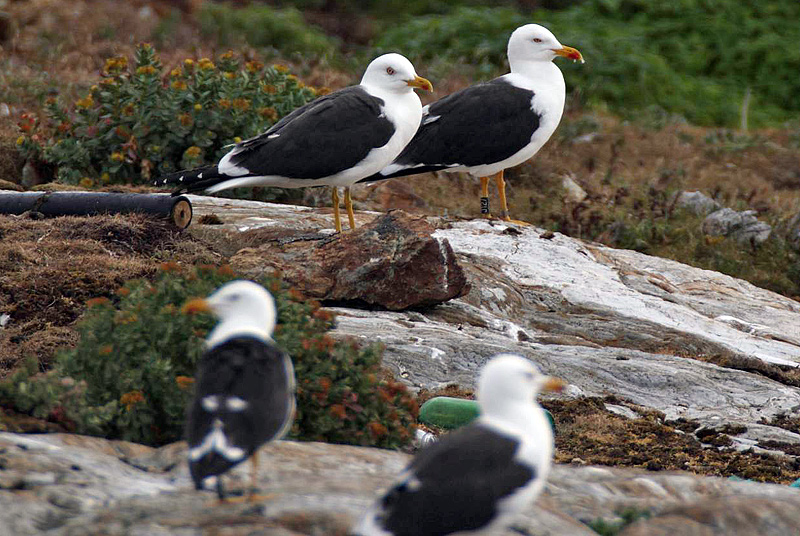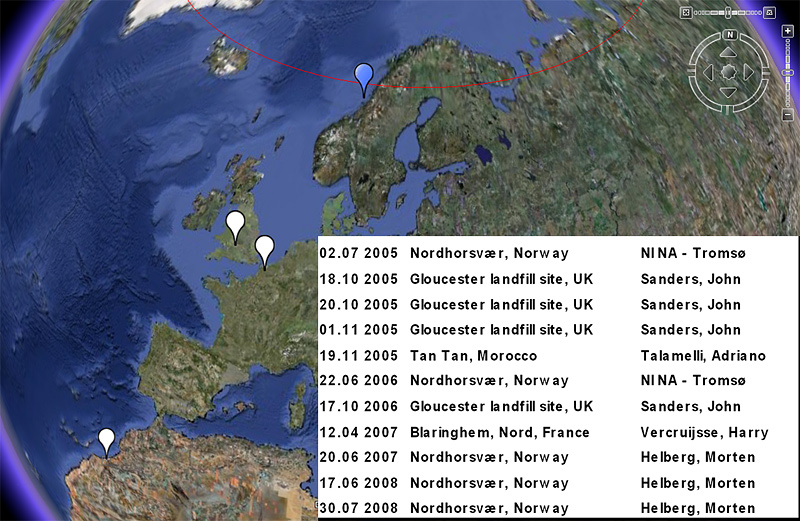 nominate Lesser Black-backed Gull (L. f. fuscus)
nominate Lesser Black-backed Gull (L. f. fuscus)
(last update:
Amir Ben Dov (Israel)
Hannu Koskinen (Finland)
Mars Muusse (the Netherlands)
fuscus 1cy July
fuscus 1cy Aug
fuscus 1cy Sept
fuscus 1cy Oct
fuscus 1cy Nov
fuscus 1cy Dec
fuscus 2cy Jan
fuscus 2cy Feb
fuscus 2cy March
fuscus 2cy April
fuscus 2cy May
fuscus 2cy June
fuscus 2cy July
fuscus 2cy Aug
fuscus 2cy Sept
fuscus 2cy Oct
fuscus 2cy Nov
fuscus 2cy Dec
fuscus 3cy Jan
fuscus 3cy Feb
fuscus 3cy March
fuscus 3cy April
fuscus 3cy May
fuscus 3cy June
fuscus 3cy July
fuscus 3cy August
fuscus 3cy Sept
fuscus 3cy October
fuscus 3cy Nov
fuscus 3cy Dec
fuscus 4cy Jan
fuscus 4cy Feb
fuscus 4cy March
fuscus 4cy April
fuscus 4cy May
fuscus 4cy June
fuscus 4cy July
fuscus 4cy Aug
fuscus 4cy Sept
fuscus 4cy Oct
fuscus 4cy Nov
fuscus 4cy Dec
fuscus ad Jan
fuscus ad Feb
fuscus ad March
fuscus ad April
fuscus ad May
fuscus ad June
fuscus ad July
fuscus ad Aug
fuscus unringed Aug
fuscus ad Sept
fuscus ad Oct
fuscus ad Nov
fuscus ad Dec
Larus fuscus fuscus 4+cy female J127, July 2005 & June 2007, Horsvær, Nordland (65.19.09 N - 11.38.02 E), Norway. Picture: Morten Helberg.
J127, ringed as adult female on the nest, in 2005. Jet-black adult nominate fuscus, breeding on Horsvær, Nordland. This Archipelago contains a pure population of such dark fuscus birds. Picture below illustrates type of breeding habitat for this colony.
Here, you also see a map of Europe, with the ring readings for J127.
More information about migration strategies in Norwegian fuscus and the ringing programme in the three northern counties of Norway: Nordland, Troms and Finnmark, can be found here: The summary for juveniles can be found in the fuscus 1cy October section, the summary for adults can be found in the fuscus adult October section.
Morten Helberg, Geir Systad, Ingve Birkeland, Nils Lorentzen & Jan Bustnes published an article about this research in Ardea 97, 2009, titled: Migration patterns of adult and juvenile Lesser Black-backed Gulls Larus fuscus from northern Norway. The complete PDF can be found HERE.

above: 4+cy female J127, July 02 2005, Hortavær, Nordland, Norway. Picture: Morten Helberg.
below: 4+cy female J127, June 22 2007, Hortavær, Nordland, Norway. Picture: Morten Helberg.
With another black-ringed adult in the foreground.

below: J127, Ring readings. Picture: Morten Helberg.
The ringing research is described in fuscus adult March section and fuscus adult October section. All resights up to May 2008 are included in this research, in the three northern counties of Norway. Colonies could either consist of pure fuscus birds, or colonies could show mixed breeding birds, both pale-mantled birds and fuscus types. Adults were trapped during the incubation period in late June, using walk-in cages. In mixed colonies with pale and dark-mantled birds, sub-species were determined easily in the hand. 199 birds were caught: 172 fuscus, 22 pale-mantled birds and just 5 birds undetermined.
Between 2000-2007, 16 birds (8%) were resighted. 10 pale-mantled birds (10/22 = 45%) and only 6 fuscus (6/172= 3,5%) were seen outside the colonies. When considering only mixed colonies, the figures don't change much; resighting probablities for fuscus remain low.
Several birds confirmed the idea of fuscus being an eastern migrant: single observations from central inland Norway, the Baltic Sea and Israel demonstrate the eastern migration route (eastern flyway through Finland, Black Sea, Israel to the Rift Valley into the African Great Lakes). However, there were observations of fuscus in England, and later that winter this bird turned up in Morocco and another bird in Portugal.
Pale-mantled birds were found in England, 3 on the Iberian Peninsula, and single birds in Morocco, Belgium, Italy and Libya. These represent the western migrants.
